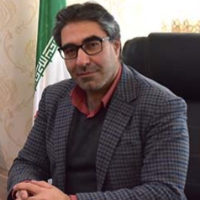Optimization of degration Basic blue 47 dye Without the use of oxidizing agents by ultrasound-electrochemical techniques and central composite design (CCD)
Author(s):
Abstract:
Intruoduction: One of the most important environmental pollutant is dye compounds. Accordingly, numerous methods have already been proposed for removing these pollutants from industrial waste especially the textile industry. One of the methods that has received a great deal of attention in recent years sono-electrochemical method.
Methods
This experimental study was conducted in a batch laboratory scale. In this approach, using the Central Composite Design (CCD) statistical method, the interactive effects of four important variables of pH, the dye solution concentration, decolorization time, and potential were analyzed and investigated.Results
Based on the conducted experiments and the results obtained in the absence of the hydrogen peroxide oxidant agent, the best conditions for decolorization in the optimal conditions of pH=9, dye concentration=303.3 μM, contact time of 93 min, and a potential of 0.81 V corresponding to the design by the software was 92.8% which was obtained experimentally as 92.34% . Chemical Oxygen Demand (COD) removal was mention according optimized conditions by the combination of ultrasound-electrochemical process 96% in this study.Conclusion
CCD was used as an effective method to measuring the concurrent effect of some important variables on BB47 dye removal. Based on the gained model. Accordingly, the optimal conditions (pH=9, dye concentration of 303/3μM, contact time of 93 min, and a potential of 0/81 V) were determined by the software. The predicted decolorization percentage by the model was 92/8% in these conditions, where it was obtained as 92/34 % after the experimental test. The closeness of these responses are indicative of appropriacy of the model.Keywords:
Language:
Persian
Published:
Tolooe Behdasht, Volume:16 Issue: 2, 2017
Pages:
20 to 30
https://magiran.com/p1737902
مقالات دیگری از این نویسنده (گان)
-
A Simple and Sensitive Electrochemical DNA Biosensor of the Bacteria Chlamydia Trachomatis
Zahra Fahraji, *, Seyed Morteza Seifati, Mostafa Azimzadeh
Analytical and Bioanalytical Chemistry Research, Spring 2022 -
Fabrication and Characterization of Chitosan/ Polycaprolactone Core-Shell Nanofiber Scaffold Containing Platelet-Rich Fibrin by Coaxial Electrospinning Method for Biomedical Applications
Amirabbas Rastegar, Mahboobeh Mahmoodi *, Mohammad Mirjalili, Navid Nasirzadeh
Advanced Prosesses in Materials Engineering,


